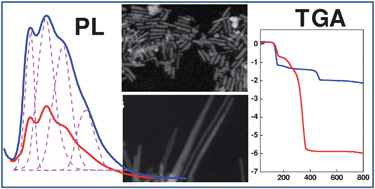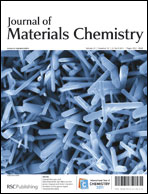Size controlled ultranarrow PbS nanorods: spectroscopy and robust stability
Abstract
We describe a simple route for designing ultranarrow PbS rods of 1.7 nm in diameter in a single step under bench-top reaction conditions. The rods are size controlled into 2.5 nm diameter by tuning the reaction temperature. Both the


 Please wait while we load your content...
Please wait while we load your content...